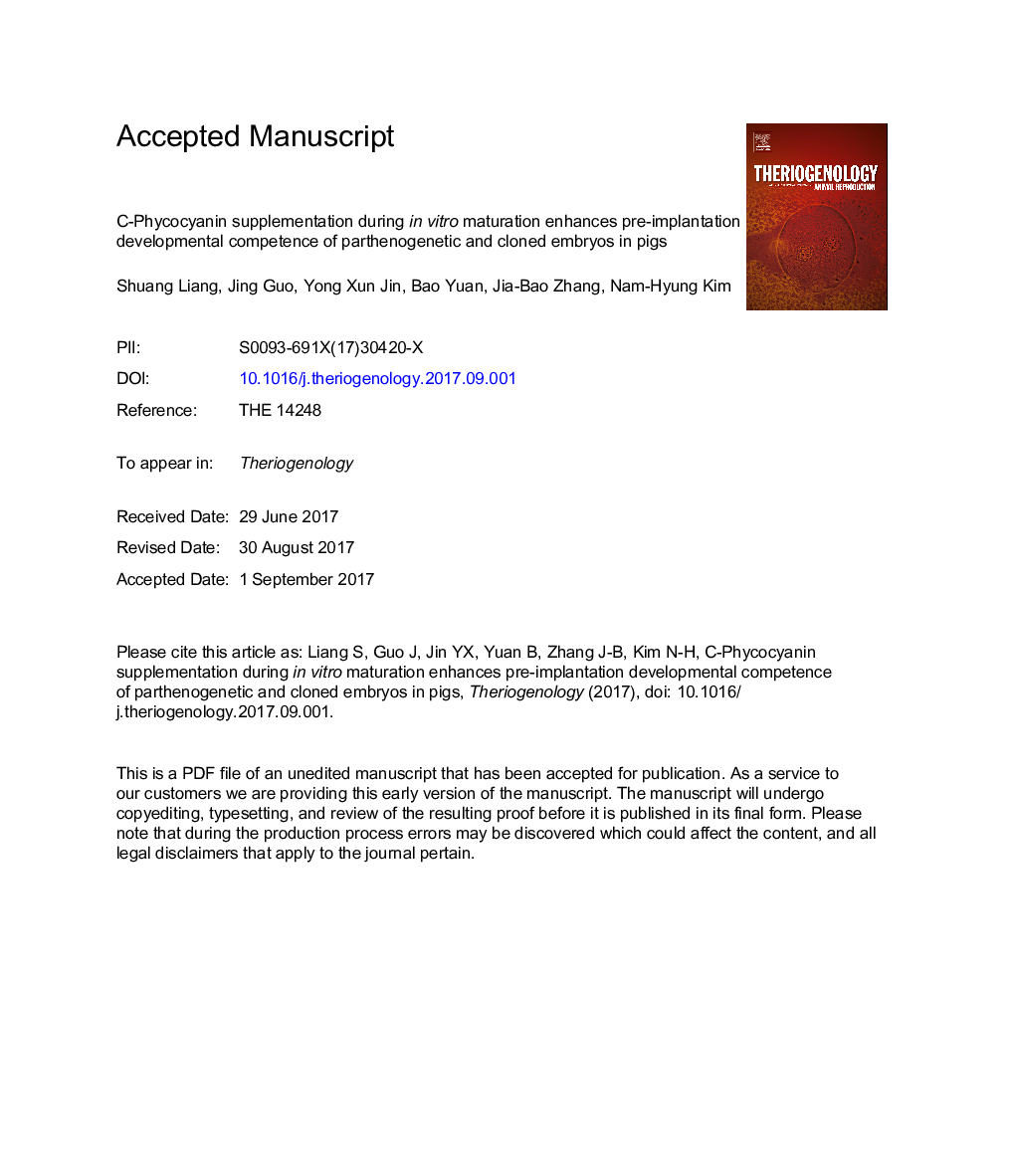| Article ID | Journal | Published Year | Pages | File Type |
|---|---|---|---|---|
| 8427791 | Theriogenology | 2018 | 31 Pages |
Abstract
C-Phycocyanin (C-PC), a protein from green microalgae, has been suggested to possess various biological activities, including antioxidant and free radical scavenging properties. The aim of the current study was to explore the effects of C-PC on the maturation of porcine oocytes and subsequent developmental competence after parthenogenetic activation and somatic cell nuclear transfer (SCNT) as well as the underlying mechanisms. There was no significant improvement in nuclear maturation rates between the control and C-PC supplementation groups (1, 3, 5, 10 μg/mL). However, supplementation of 5 μg/mL C-PC in the maturation medium significantly increased blastocyst formation and hatching rates after parthenogenetic activation (59.6 ± 3.6% and 33.0 ± 2.6% vs. 49.8 ± 3.5% and 27.4 ± 2.4%, respectively). In addition, the presence of C-PC during the maturation period significantly improved blastocyst formation rates and total cell numbers after SCNT (24.8 ± 1.9% and 42.2 ± 3.3 vs. 21.6 ± 2.2% and 39.5 ± 3.4, respectively) compared to the control group. Furthermore, cellular proliferation and the expression of pluripotency-related genes (SOX2 and NANOG) were increased in cloned blastocysts derived from the C-PC supplemented group. Importantly, C-PC supplementation during maturation not only improved cumulus expansion and increased the expression of cumulus expansion-related genes (HAS2, PTX3, and PTGS2), but also enhanced antioxidant capacity, improved mitochondria function, and decreased cathepsin B activity in porcine oocytes. These results demonstrate that C-PC may be useful for improving porcine oocyte quality and subsequent developmental competence in embryos.
Keywords
Related Topics
Life Sciences
Agricultural and Biological Sciences
Animal Science and Zoology
Authors
Shuang Liang, Jing Guo, Yong Xun Jin, Bao Yuan, Jia-Bao Zhang, Nam-Hyung Kim,
